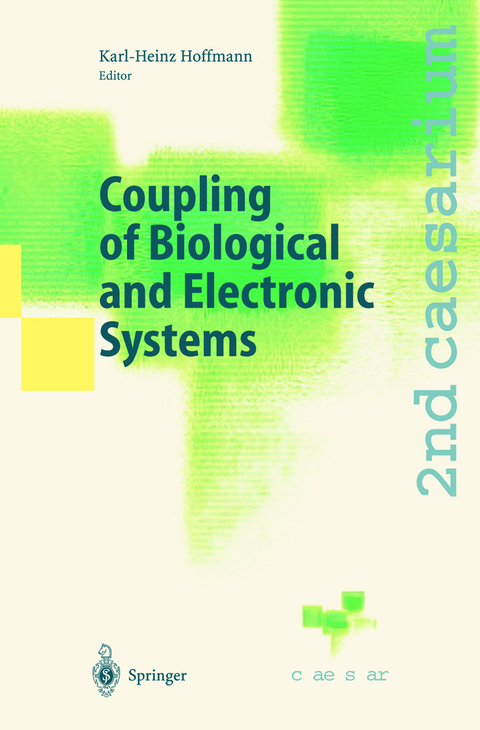
Coupling of Biological and Electronic Systems
Springer Berlin (Verlag)
978-3-540-43699-7 (ISBN)
t With the F caesarium, that was held in Bonn in November of 1999, the newly founded research center caesar (center of advanced european studies and research) has initiated a series of symposia, which are to bring researchers together for discussions and definition of positions on the various research fields at caesar on an annual basis. The areas of research at caesar incorpo rate materials science/nanotechnology, coupling of biological and electronic systems and ergonomics in communications. nd In November of 2000, the 2 caesarium, this time with the theme of "Coupling of Biological and Electronic Systems" was held in Bonn. The con ference transcript at hand delivers an impression of the introduced topics and discussions. The coupling of biochemics and electronics together with bioinformatics is an exciting and current thematic complex, which will surely co-define the development of science and research for a long time. The pre n d sentations held at the 2 caesarium gave a glimpse into broadly diversified areas such as bioinformatics, biomolecules and biosensor technology. Further miniaturisation up to the nanoscale played as much of a role asthe conception of fast algorithms for the structural reconnoitring of proteins. We would like to thank the participants of the symposium for the inspiring discussions in a not always easy interdisciplinary dialogue. Thanks to the organising com mittee, the colleagues Michael Famulok, Daniel Hoffmann, Michael Moske and Eckhard Quandt, the symposium became a success.
1 On the Suitability of Red and Enhanced Green Fluorescent Protein (DsRed/EGFP) as Reporter Combination.- 2 Historical overview of various concepts for in vivo chemical analysis from catheter-tip sensors to microdialysis lab-on-a-chip.- 3 Nanometer addressable lateral surface structuring by use of nucleic acids.- 4 The patch-clamp on-chip technology.- 5 Simulation of evolving systems using FPGA technology.- 6 A New Method for the Fast Solution of Protein-3D-Structures, Combining Experiments and Bioinformatics.- 7 Microfabricated semiconductor structures - Advances in (bio-)chemical sensing.- 8 Communication between Redox Proteins and Modified Electrodes.- 9 Advanced Simulation in the Configurable Massively Parallel Hardware MereGen.- 10 Fast Response by Synchronization.
| Erscheint lt. Verlag | 9.7.2002 |
|---|---|
| Zusatzinfo | VII, 126 p. |
| Verlagsort | Berlin |
| Sprache | englisch |
| Maße | 155 x 235 mm |
| Gewicht | 372 g |
| Themenwelt | Informatik ► Weitere Themen ► Bioinformatik |
| Medizin / Pharmazie | |
| Naturwissenschaften ► Biologie ► Genetik / Molekularbiologie | |
| Technik ► Umwelttechnik / Biotechnologie | |
| Schlagworte | Bioinformatics • Bioinformatik • Biomaterial • biomaterials • Biosensor • Biotechnologie • DNA computer • lab-on-a-chip • nanoscale • Nanotechnologie • nanotechnology |
| ISBN-10 | 3-540-43699-5 / 3540436995 |
| ISBN-13 | 978-3-540-43699-7 / 9783540436997 |
| Zustand | Neuware |
| Haben Sie eine Frage zum Produkt? |
aus dem Bereich


